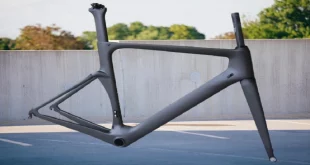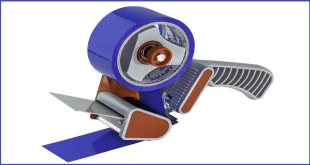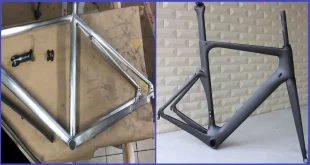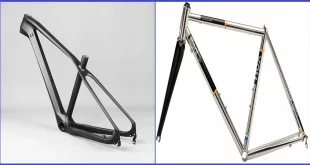Titanium and carbon bike frames both have their advantages, but a titanium frame provides better durability and strength compared to a carbon frame. With its superior strength-to-weight ratio and resistance to fatigue, titanium frames offer a longer lifespan and better performance over time.
Additionally, titanium frames provide a smooth ride quality with excellent vibration damping properties. On the other hand, carbon frames are lighter and offer more flexibility in design, allowing for aerodynamic shapes and seamless integration of components. They also provide a stiffer and more responsive ride feel, making them popular among professional cyclists and racers.
Overall, the choice between titanium and carbon frames depends on individual preferences and riding style.
Strength And Durability
Comparison Of Strength Between Titanium And Carbon Frame
- Titanium frames are known for their exceptional strength. The material used in these frames is renowned for being incredibly durable and has a high strength-to-weight ratio.
- Carbon frames, on the other hand, are also strong but in a different way. They are made up of carbon fibers that provide excellent stiffness and allow for precise control over the frame’s strength.
Durability Factor Of Titanium And Carbon Frame
- Titanium frames are highly durable and can last for a very long time. They have excellent resistance to corrosion and are unaffected by changes in temperature or humidity.
- Carbon frames are also durable but require proper care and maintenance to ensure longevity. They can be prone to damage from impact or stress if not handled carefully.
Resistance To Impacts And Crashes
- Titanium frames are known for their superior impact resistance. They can withstand crashes and heavy impacts without suffering structural damage, making them ideal for rough terrains and off-road biking.
- Carbon frames, although strong, are more susceptible to damage from impacts and crashes compared to titanium frames. They can crack or break under extreme force, which may require costly repairs or replacements.
Titanium frames offer exceptional strength and durability, making them a popular choice for riders seeking long-lasting performance. On the other hand, carbon frames provide excellent stiffness but require careful handling to avoid damage from impacts and crashes. Ultimately, the choice between titanium and carbon frame depends on individual preferences and riding style.
Weight And Performance
When it comes to choosing a bike frame, weight and performance are two crucial factors that every cyclist considers. The frame material plays a significant role in determining these aspects, and two popular options are titanium and carbon frames. In this section, we will evaluate the weight difference between titanium and carbon frames, as well as the impact of weight on bike performance, specifically focusing on climbing ability and efficiency.
Evaluation Of Weight Difference Between Titanium And Carbon Frame
Titanium frame:
- Known for its durability and strength
- Considered heavier compared to carbon frames
- Offers a sturdy and reliable ride experience
- Provides excellent shock absorption, ideal for long rides
- Gives a smooth and comfortable feel on rough terrains
Carbon frame:
- Highly favored for its lightweight nature
- Offers superior strength-to-weight ratio
- Provides a responsive and agile ride experience
- Enhances acceleration and speed capabilities
- Ensures versatility, making it suitable for various riding disciplines
Impact Of Weight On Bike Performance
Climbing ability:
Lightweight carbon frame:
- Facilitates easier uphill climbs due to lower weight
- Enables faster accelerations on ascents
- Enhances overall climbing efficiency
Slightly heavier titanium frame:
- Offers stability during climbs, reducing the risk of skidding
- Provides a powerful pedaling platform for tackling steep inclines
Efficiency:
Carbon frame:
- With its lighter weight, requires less energy expenditure
- Allows riders to cover greater distances with less effort
- Enhances maneuverability and control
Titanium frame:
- Offers solid power transfer, making each pedal stroke impactful
- Provides a predictable and reliable riding experience
- Ensures stability and confidence, especially when riding at high speeds or on descents
Both titanium and carbon bike frames have their unique advantages when it comes to weight and performance. The lightweight nature of carbon frames caters to optimal climbing ability, efficient energy usage, and enhanced speed, making them a popular choice among competitive cyclists.
On the other hand, titanium frames may be slightly heavier but offer durability, stability, and a comfortable ride, making them a favored option for endurance riders and those who prioritize reliability. Ultimately, the decision between titanium and carbon frame should be based on personal preferences, riding style, and intended use of the bike.
Comfort And Vibration Damping
Assessment Of The Comfort Level Provided By Titanium And Carbon Frame
When it comes to choosing the right bike frame, comfort is a crucial factor to consider. Both titanium and carbon frames have their own unique advantages when it comes to providing a comfortable ride. Let’s take a closer look at the comfort level offered by each frame material:
Titanium frame:
- Titanium frames are known for their natural vibration-damping properties. This means that they have the ability to absorb road shocks and vibrations, resulting in a smoother and more comfortable ride.
- The inherent flexibility of titanium allows it to flex and conform to the contours of the road, creating a forgiving and comfortable ride quality.
- The material’s high tensile strength and excellent fatigue resistance also play a role in enhancing comfort, as it reduces the amount of energy transferred from the road to the rider.
Carbon frame:
- Carbon frames are also favored for their ability to provide a comfortable ride. Carbon fibers have a unique ability to dampen vibrations and absorb road shocks, creating a smoother and less fatiguing riding experience.
- The carbon fiber construction allows for precise control over the frame’s stiffness and compliance, allowing manufacturers to design frames that strike the perfect balance between comfort and performance.
- Carbon frames can be engineered to have specific areas of stiffness and flex, catering to different riding styles and preferences.
Both titanium and carbon frames offer exceptional comfort levels due to their intrinsic properties. However, it’s important to note that personal preferences, riding style, and terrain should also be taken into consideration when choosing between the two.
Vibration Damping Capability Of Each Frame Material
Vibration damping plays a crucial role in ensuring a comfortable ride, as excessive vibrations can lead to discomfort, fatigue, and even injuries. Let’s delve into the vibration damping capabilities of titanium and carbon frame materials:
Titanium frame:
- Titanium has excellent natural vibration-damping properties. Its ability to absorb and dissipate vibrations is highly beneficial for reducing the amount of road buzz felt by the rider.
- The flex characteristics of titanium contribute to its vibration damping capabilities, as it allows the frame to absorb shocks and vibrations without transmitting them directly to the rider.
- The combination of titanium’s inherent material properties and frame design can result in a smoother and more comfortable ride, especially on rough or uneven terrain.
Carbon frame:
- Carbon fiber is renowned for its exceptional vibration damping properties. The unique composition of carbon fibers enables them to effectively absorb and dissipate vibrations across the frame, minimizing their transfer to the rider.
- Manufacturers can strategically layer different carbon fiber orientations and resin matrices to enhance the frame’s ability to dampen vibrations, resulting in a more comfortable ride.
- The stiffness-to-weight ratio of carbon fiber also plays a role in vibration damping, as it allows the frame to better absorb and disperse excessive vibrations.
Both titanium and carbon frames exhibit impressive vibration damping capabilities, thanks to their inherent material properties and engineering possibilities. The choice between the two ultimately depends on personal preferences, intended use, and the importance of comfort in your cycling experience.
Long-Distance Riding Comfort And Fatigue Reduction
For cyclists who embark on long-distance rides, comfort and fatigue reduction are paramount for an enjoyable and sustainable riding experience. Here’s how titanium and carbon frames fare when it comes to long-distance riding:
Titanium frame:
- Titanium frames excel in providing long-distance riding comfort. The material’s natural ability to absorb road vibrations and dampen shocks contributes to reduced fatigue over extended periods of riding.
- The inherent flexibility of titanium allows it to flex and provide a smooth ride, minimizing the impact on the rider’s body. This helps to reduce muscle fatigue and discomfort during long rides.
- Titanium frames are also known for their durability, ensuring that the comfort experienced at the beginning of a long-distance ride is maintained throughout its duration.
Carbon frame:
- Carbon frames are designed with long-distance comfort in mind. Their vibration damping properties and ability to absorb shocks contribute to a more comfortable ride, even over rough terrain.
- The specific layup and design of carbon frames can be tailored to enhance long-distance riding comfort. Manufacturers often prioritize optimizing the frame’s compliance, ensuring a smoother and less fatiguing experience for the rider.
- Carbon frames are also engineered to be lightweight, reducing the overall bike weight, which translates to less fatigue for the rider during prolonged rides.
Both titanium and carbon frames provide excellent comfort and fatigue reduction for long-distance riding. The choice between the two will depend on personal preferences, riding style, and the specific comfort characteristics that align with your needs.
Remember, comfort is subjective, and what works well for one rider may not necessarily work for another. Ultimately, test riding different frames and seeking expert advice are key steps in determining the frame material that best suits your comfort needs for long-distance rides.
Customization And Aesthetics
When it comes to choosing a bike frame, the decision between titanium and carbon can be a daunting one. Both materials offer unique advantages and cater to different preferences. In this section, we will explore the customization options and visual appeal of each frame material, helping you make an informed choice.
Customizability Options Offered By Titanium And Carbon Frame
Titanium frame:
- Titanium frames are highly customizable, allowing riders to personalize their bikes according to their specific needs and preferences.
- Titanium can be easily manipulated and shaped, offering flexibility when it comes to frame geometry and design.
- The material is known for its durability and resistance to corrosion, making it an excellent choice for riders who want a long-lasting frame that can withstand various terrains and weather conditions.
- Custom-built titanium frames can accommodate different frame sizes, ensuring a comfortable fit for riders of all shapes and sizes.
- The ability to select different tube diameters and thicknesses provides riders with the opportunity to fine-tune their bike’s performance characteristics.
Carbon frame:
- Carbon frames also offer a degree of customization, although not as extensive as titanium.
- Carbon fibers can be manipulated to create different ride qualities by varying the fiber layup and resin composition.
- The material’s inherent stiffness and lightness allow for precise tuning, making carbon frames suitable for riders seeking optimal performance.
- Integrated features such as internal cable routing and aerodynamic designs contribute to a sleek and clean look.
- Manufacturers often provide a range of sizes and geometries to accommodate different riders, allowing for some customization within those options.
Visual Appeal And Aesthetics Of Each Frame Material
Titanium frame:
- Titanium frames have a distinct appearance characterized by a brushed or polished finish, exuding a classic and timeless appeal.
- The unique coloration of titanium, ranging from a silver-gray hue to vibrant blues and purples through anodization, adds to its visual appeal.
- The industrial look of titanium frames is often associated with durability and craftsmanship, appealing to riders who value functional aesthetics.
Carbon frame:
- Carbon frames are known for their modern and sleek aesthetics, often featuring smooth lines and aerodynamic designs.
- The material allows for intricate molding and shaping, resulting in visually striking frames that catch the eye.
- Carbon frames can be finished with various clear coats, showcasing the unique carbon weave patterns, adding a touch of elegance.
- The black color of carbon frames provides a stealthy and high-performance look, favored by many riders.
Both titanium and carbon frames offer different customization options and unique visual appeals. Titanium frames excel in their versatility and the ability to be tailored to individual needs, while carbon frames impress with modern aesthetics and performance-oriented designs. Ultimately, the choice between the two boils down to personal preferences, riding styles, and budget considerations.
Take the time to test ride both options and consult with experts to find the perfect frame that suits your needs and fulfills your aesthetic desires.
Cost And Value For Money
When it comes to choosing a bike frame, one of the biggest considerations for cyclists is the cost and value for money. Both titanium and carbon frames have their own advantages and disadvantages, but understanding the price comparison and long-term value can play a crucial role in making the right decision.
In this section, we will take a closer look at the cost and value for money of titanium and carbon bike frames.
Price Comparison Of Titanium And Carbon Frame
- Titanium frames tend to be more expensive upfront compared to carbon frames. The cost of raw materials and the manufacturing process make titanium frames pricier.
- Carbon frames, on the other hand, are relatively less expensive to produce, making them more affordable for cyclists in search of a budget-friendly option.
- It’s important to note that the price range of both titanium and carbon frames can vary based on factors such as brand reputation, frame design, and additional features.
- Some mountain bikers might opt for titanium frames despite the higher upfront cost due to its durability and ability to withstand rough terrains.
Consideration Of Long-Term Value For Money
- Titanium frames offer excellent long-term value for money due to their durability. They are resistant to corrosion, impact, and fatigue, making them highly reliable and long-lasting.
- Carbon frames, though not as durable as titanium, are lightweight and offer great performance. Cyclists who prioritize speed and agility often prefer carbon frames despite the need for occasional maintenance and potential vulnerability to impacts.
- When considering long-term value, it is important to factor in the cost of maintenance, repairs, and upgrades over the lifespan of the bike frame.
- Titanium frames generally require less maintenance and have a longer lifespan compared to carbon frames, making them a solid investment for cyclists who want a frame that will stand the test of time.
Factors Influencing The Overall Cost-Effectiveness
- Personal preference and riding style play an essential role in determining the overall cost-effectiveness of a bike frame. Consider your individual needs and priorities before making a decision.
- If you’re a casual rider or a beginner, a carbon frame might be more cost-effective as it offers a good balance between performance and affordability.
- Titanium frames are an ideal choice for serious cyclists or professionals who prioritize durability and long-term value.
- Resale value is another factor to consider when determining cost-effectiveness. Titanium frames generally retain their value better over time compared to carbon frames due to their lasting durability and reputation in the cycling community.
The cost and value for money of titanium and carbon bike frames depend on various factors, including the initial price, long-term durability, and personal preferences. While titanium frames may come with a higher upfront cost, they offer unparalleled durability and lasting value.
Carbon frames, on the other hand, provide a lightweight and affordable option for cyclists who prioritize performance and speed. Ultimately, it is important to assess your individual needs, riding style, and budget before making a decision on which frame is better suited for you.
Maintenance And Repair
If you’re considering investing in a new bike, one of the critical factors to consider is the frame material. Titanium and carbon are two popular options known for their unique qualities and performance benefits. In this section, we will explore the maintenance and repair aspects of both titanium and carbon bike frames, helping you make an informed decision.
Ease Of Maintenance For Titanium And Carbon Frame:
When it comes to maintaining your bike frame, both titanium and carbon have their advantages and considerations. Here’s a breakdown of the maintenance factors for each material:
Titanium Frame Maintenance:
- Titanium frames are highly corrosion-resistant, which means they require minimal maintenance compared to other materials.
- Routine cleaning and inspection are recommended to ensure the frame stays in optimal condition.
- Titanium frames do not require frequent lubrication as the material is naturally resistant to seizing or galling.
Carbon Frame Maintenance:
- Carbon frames require regular inspection for any signs of damage, such as cracks or delamination.
- Cleaning a carbon frame is relatively straightforward, but it’s essential to avoid using harsh chemicals or abrasive materials that could damage the surface.
- Periodic waxing can help protect the frame’s finish and enhance its longevity.
Repair Options And Costs For Each Frame Material:
Despite their durability, bike frames can occasionally suffer damage and require repair. Here are the repair options and costs associated with titanium and carbon frames:
Titanium Frame Repairs:
- Titanium frames, thanks to the metal’s exceptional strength and resilience, can often be repaired through welding or specialized techniques.
- Welding small cracks or dents is generally feasible, making it a cost-effective option compared to complete frame replacement.
- Titanium frame repair costs may vary depending on the severity of the damage and the expertise of the repair technician.
Carbon Frame Repairs:
- Carbon frame repairs are more complex and require professional expertise, preferably from a carbon fiber specialist.
- Small cosmetic damages such as scratches can be repaired without compromising the frame’s structural integrity.
- For more severe damage such as cracks or fractures, composite repair techniques may be needed, which involve removing damaged layers and applying new carbon fiber patches.
- Carbon frame repair costs can be relatively high due to the specialized skill set required and the intricate nature of the repair process.
Both titanium and carbon frames have their maintenance considerations and repair options. While titanium frames require minimal maintenance and can be repaired through welding, carbon frames demand regular inspection and may require professional expertise for repairs. It’s crucial to assess your preferences, riding style, and budget to determine which frame material suits you best.
Remember, proper maintenance and timely repairs will ensure the longevity and performance of your bike frame, regardless of the material chosen.
Sustainability And Environmental Impact
As conscientious consumers, it’s important to consider the sustainability and environmental impact of the materials we choose, especially when it comes to bike frames. Both titanium and carbon frames have their own sustainability factors and environmental footprints. Let’s explore them below:
Environmental Footprint Of Titanium And Carbon Frame Manufacturing:
Titanium frame manufacturing:
- Titanium is derived from the ore and is an energy-intensive material to produce. The extraction process requires a significant amount of energy and results in a higher carbon footprint compared to other frame materials.
- However, the longevity and durability of titanium frames can offset the initial energy expenditure, making it a sustainable choice in the long run.
Carbon frame manufacturing:
- Carbon frames are made from carbon fiber, a composite material produced through a complex manufacturing process that involves weaving carbon fibers together with resins.
- While the manufacturing process itself can have a lower carbon footprint compared to titanium, the production of carbon fiber involves the use of fossil fuels and can result in toxic emissions.
Recycling And Disposal Considerations:
Titanium frame recycling and disposal:
- Titanium frames can be recycled, but the process is more challenging due to the strength and durability of the material.
- However, due to titanium’s longevity, frames are often repurposed or handed down, prolonging their life cycle.
Carbon frame recycling and disposal:
- Carbon frames are not easily recyclable due to the complexity of separating the carbon fibers from the resins.
- Disposal of carbon frames can be problematic, as they are typically incinerated or end up in landfills. This presents challenges in terms of environmental concerns.
Sustainable Aspects Of Each Frame Material:
Titanium frame sustainability:
- Titanium frames have a longer lifespan compared to carbon frames, thanks to the material’s durability and resistance to fatigue.
- The longevity of titanium frames reduces the need for frequent replacements, ultimately minimizing the environmental impact.
Carbon frame sustainability:
- Carbon frames have the advantage of being lighter, which can contribute to energy savings and reduce the overall environmental impact during use.
- The lightweight properties of carbon frames also provide enhanced performance and energy efficiency during cycling.
Both titanium and carbon frames have their own sustainability considerations. While titanium frames may have a higher initial environmental footprint during manufacturing, their longevity and durability outweigh this impact. On the other hand, carbon frames offer performance benefits and energy savings during use, but their recycling and disposal pose challenges.
Ultimately, the choice between titanium and carbon frame depends on various factors, including personal preferences, cycling style, and sustainability priorities.
Choosing The Right Frame Material
Summary Of Key Points Discussed
- Titanium and carbon frames are two popular options for bike frames, each with its own set of advantages and disadvantages.
- Titanium frames offer durability, strength, and a comfortable ride due to their ability to absorb vibrations. They are corrosion-resistant and can last a lifetime if well maintained.
- Carbon frames, on the other hand, are known for their lightweight nature, making them great for climbing and fast riding. They offer excellent stiffness and responsiveness, enhancing power transfer.
- Both frame materials have their own unique aesthetic appeal, with titanium frames giving a classic, timeless look, and carbon frames having a sleek, modern appearance.
- Budget is an important factor to consider, as titanium frames tend to be more expensive than carbon frames.
- When it comes to customization options, carbon frames offer more versatility, allowing for various shapes, tube sizes, and layups.
- Another aspect to consider is repairability. In case of damage, titanium frames can be repaired easily, while repairing carbon frames requires professional expertise.
- Ride quality is subjective and depends on personal preferences. Some riders may prefer the lively and responsive feel of a carbon frame, while others may appreciate the smooth and comfortable ride of a titanium frame.
- Finally, the intended use and riding style should be taken into account when deciding between titanium and carbon frames. For endurance and long-distance riding, titanium frames may be more suitable, while carbon frames excel in racing and aggressive riding.
Factors To Consider When Deciding Between Titanium And Carbon Frame
- Budget: Determine how much you are willing to spend, as titanium frames tend to be more expensive than carbon frames.
- Weight: Consider whether a lightweight frame is important to you, as carbon frames are significantly lighter than titanium frames.
- Durability: Assess the durability requirements based on your riding style and terrain. Titanium frames are known for their strength and longevity, while carbon frames may be more susceptible to damage from impacts.
- Ride quality: Determine the type of ride quality you desire. Titanium frames provide a comfortable and smooth ride, while carbon frames offer a lively and responsive feel.
- Repairability: Evaluate the ease of repair in case of damage. Titanium frames can be easily repaired, whereas carbon frames may require professional assistance.
- Customization options: Consider the level of customization you desire. Carbon frames offer more flexibility in terms of design choices and customization.
- Aesthetic appeal: Decide which frame material resonates with your personal style. Titanium frames have a timeless and classic appearance, while carbon frames have a sleek and modern look.
- Intended use: Consider your riding goals and style. Titanium frames are well-suited for endurance and long-distance riding, while carbon frames excel in racing and aggressive riding.
- Personal preference: Ultimately, trust your own instincts and preferences when choosing between titanium and carbon frames. Your comfort and enjoyment on the bike are paramount.
By carefully considering these factors, you can make an informed decision regarding the frame material that best suits your needs, preferences, and riding style. Remember, there is no definitive answer as to which is better – it ultimately comes down to what works best for you.
Frequently Asked Questions For Titanium Vs Carbon Bike Frame: Which Is Better Titanium Or Carbon Frame?
What Are The Advantages Of A Titanium Bike Frame Compared To A Carbon Frame?
Titanium bike frames offer excellent durability, strength, and corrosion resistance, making them ideal for long-term use. They also provide a comfortable ride due to their vibration-dampening properties. Titanium frames are known to last a lifetime without any degradation in performance.
Are Carbon Bike Frames Lighter Than Titanium Frames?
Yes, carbon bike frames are generally lighter than titanium frames. The use of carbon fiber allows for the construction of extremely lightweight frames without compromising strength or rigidity. This lightness contributes to faster acceleration and improved climbing abilities.
Which Bike Frame Material Is More Expensive, Titanium Or Carbon?
Titanium bike frames tend to be more expensive than carbon frames. The cost of titanium, as well as the labor-intensive process required to work with it, contribute to the higher price tag. Carbon frames, although still pricey, are generally cheaper due to the mass-production techniques used in their manufacturing process.
Conclusion
After a comprehensive comparison between titanium and carbon bike frames, it is evident that both materials offer unique advantages and considerations. Titanium frames boast exceptional durability, resisting dents and impacts while delivering a smooth ride experience. On the other hand, carbon frames provide unrivaled stiffness and an incredibly lightweight feel, enhancing speed and performance.
The choice between the two ultimately depends on individual preferences and riding style. For riders seeking a frame that will endure the test of time and withstand rough terrains, titanium frames are an excellent option. Alternatively, those prioritizing speed and maneuverability may prefer the lightweight characteristics of carbon frames.
Both materials have proven themselves in the cycling industry, and it’s crucial to consider factors such as budget, riding goals, and maintenance requirements when making a decision. Ultimately, the “right” choice lies in personal preference and intended use. Whether you decide on a titanium or carbon frame, both options offer exceptional performance and can take your cycling experience to new heights.
 CommutingLife Explore The World On Two Wheels
CommutingLife Explore The World On Two Wheels





